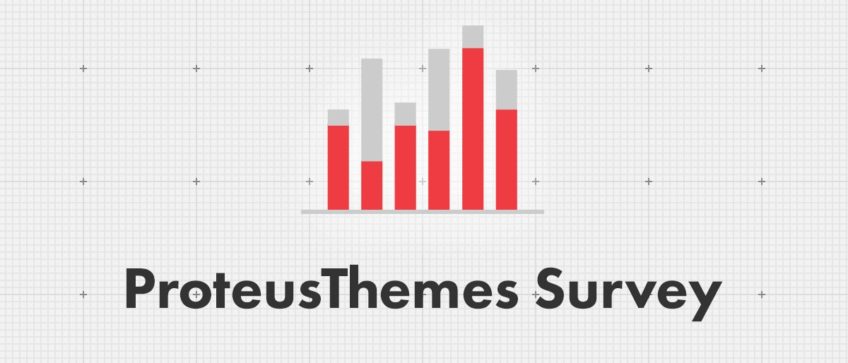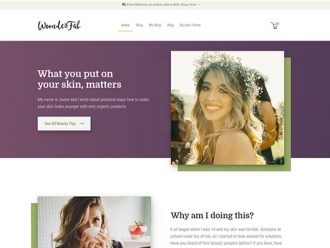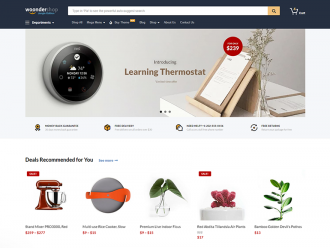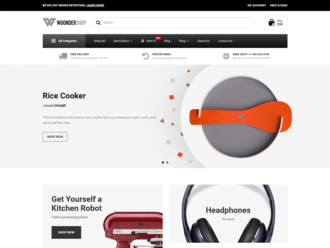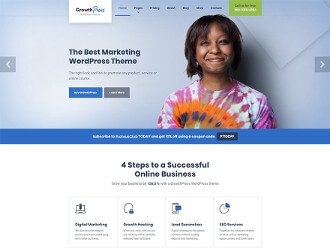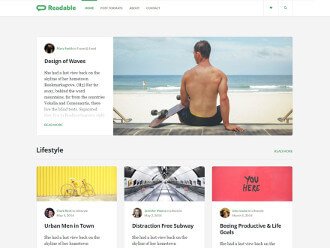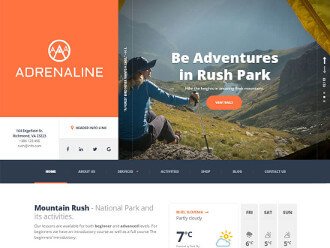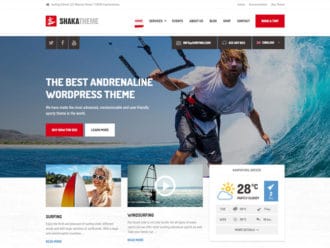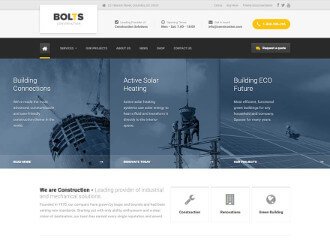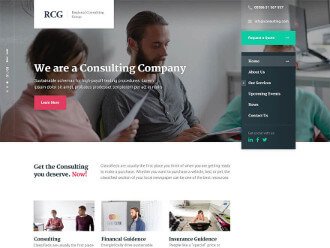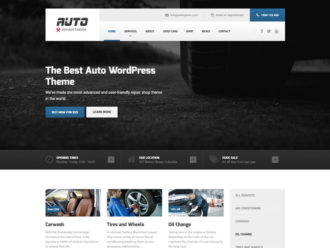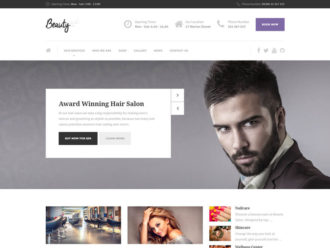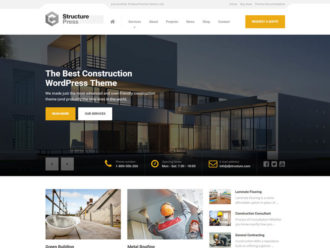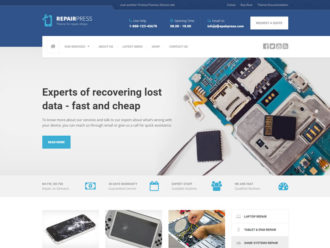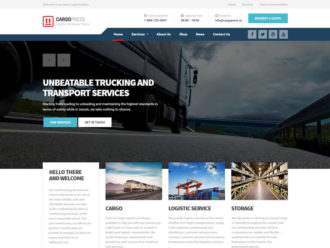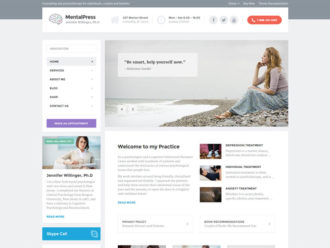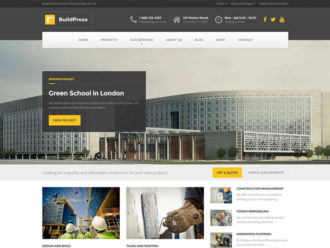As we move towards making our own theme shop, we decided that a survey of theme purchasers was a crucial move. We don’t get a lot of insights from the themes we sell on ThemeForest. So, in order to add some depth to our ideas for the shop, we needed to find a way to understand more about how and why people buy the themes that they do.
What did we want to know?
Knowing how many websites the people we are in touch with make per year is a good start. If everybody who participated in our survey only made one site, or only made ten, then we would have to think about very different pricing structures.
We want to know where people begin their search for themes, this is an important thing to grasp because if 100% of our respondents use ThemeForest to begin searching, it presents a much different proposition in terms of marketing reach than if everybody used Google, and vice versa.
Whether or not people would be interested in an annual subscription to a theme publisher’s products was our next question. Subscriptions are a road we are very keen to go down, so if nobody at all was positive, this would force a root and branch rethink on the model. We also asked those who said ‘yes’, how much they would be willing to pay.
The remaining questions were of a more qualitative nature. The things people like and dislike about using themes and their personal reasons for selecting a theme (or not). We also asked the types of themes people would like to see more of. These are just great insights for a publisher to know, independent theme shop or not.
Our survey had 160 responses, not a huge sample – but certainly enough to start noticing patterns. As I mentioned, the aim of the survey was to better understand the people to whom we have direct access. Our first route was Zendesk. Then we ran a theme giveaway (Purus) to attract responses from our mailing list. The Purus giveaway was then extended to our social media channels (Twitter/Facebook).
Here is what we found out:
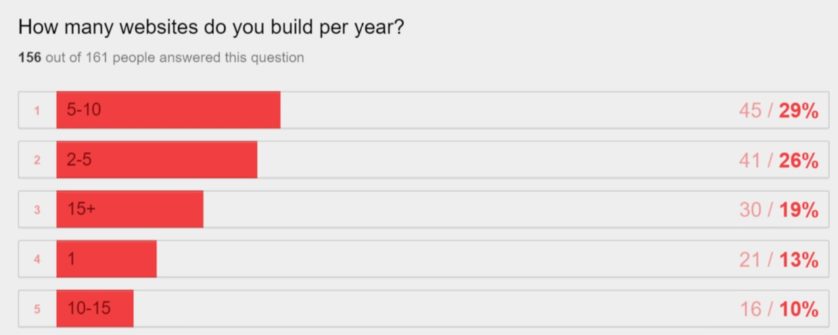
Our first error was that we did not make each question compulsory, we lost out on five responses here. Although it was great to learn that only 13% of respondents make only one website per year. Knowing that 58% make more than five websites per year is encouraging and gives us a useful sketch for how to develop a subscription model, or use bundle packages to convert one-time buyers into repeat customers.
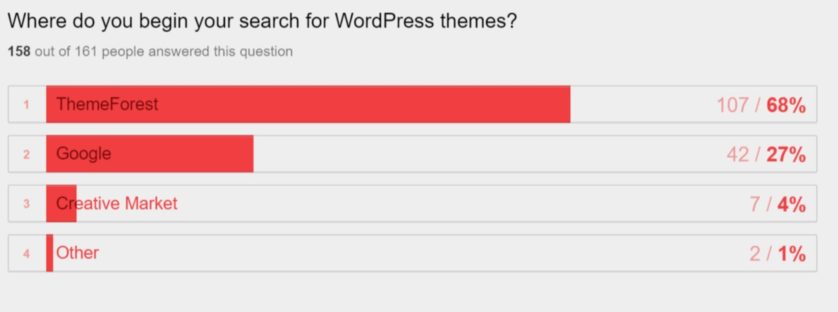
The responses to this question offer a very good insight into the difficulties we will face in becoming a first destination for themes. As the overwhelming majority of respondents use ThemeForest – and we obviously cannot compete with their marketing budget– we know now that our pricing and communications should be based on what we can offer that they can’t. What is not available on ThemeForest? Deals, of course. The structure of these deals is something we need to think deeply on.

For us, this is another encouraging set of responses. It is great that 53% find subscriptions to be an interesting proposition. But also interesting that 47% are not, some people just don’t like to feel bound to long-term deals, or may feel unsure that we have enough variety to fulfil their needs. This 47% represent an opportunity for trying out less committal, more fluid models than year-round access.
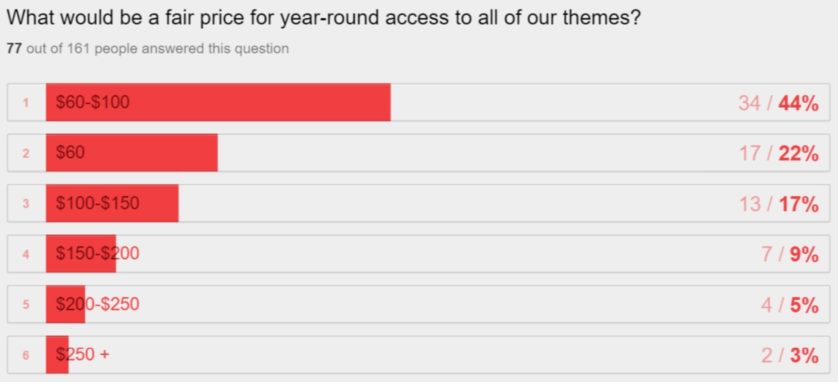
We made another error here in having a ‘$60’ option followed by a ‘$60-$100’ option. This would have been better if we replaced ‘$60’ with ‘less than $60’. Nevertheless, these responses we might take with a pinch of salt. I would definitely consider it, if I could influence the price of something I was interested in by suggesting a lower one on a survey. That said, most of the responses were reasonable and give us a good idea for how to make the most mutually beneficial package for our customers and ourselves.
What are your key deciding factors when buying a theme?
The responses to this question not only provided a good insight into theme-buyer thought patterns. But also a possible opportunity for us to adapt ourselves to them. Over and over the answers mentioned ‘support’, ‘design’, ‘feedback‘ / ‘ratings’. We have all of these factors in abundance. These are the things – that with solid copy and testimonials – we will aim to reinforce on our new landing page.
What frustrates you most when working with WordPress themes?
These answers also point us on the right track in terms of creating a customer journey. For example, many of the answers are along the lines of ‘not intuitive’, ‘not simple’, ‘difficult’ ‘bad support’… We make our themes as simple to use as possible. We also have excellent support. So again, these are the strengths that we need to ensure we present to the world.
Conclusion
Our hypothesis that subscriptions are the way to go remains the same post-survey. Offering all of our themes for around the price of two themes is -in our minds- a great offer, and strategy. But it would be difficult to say that we drew any concrete conclusions from this survey. Real conclusions come with conversions, not surveys. That doesn’t mean it wasn’t a useful exercise though. The survey responses act as good indicators. But we have a lot of experimenting and real-world analysis to do once our own independent store is setup.
